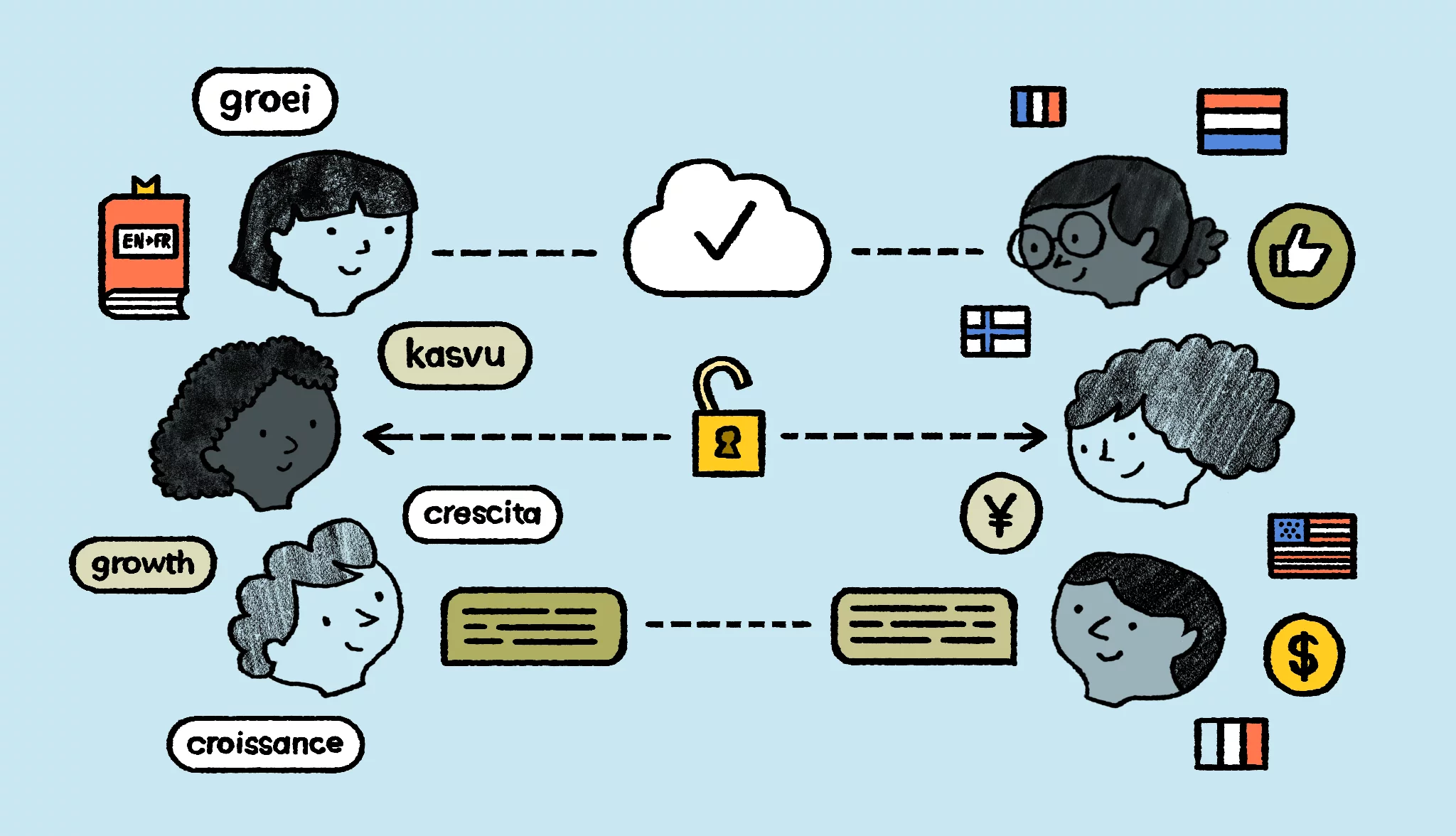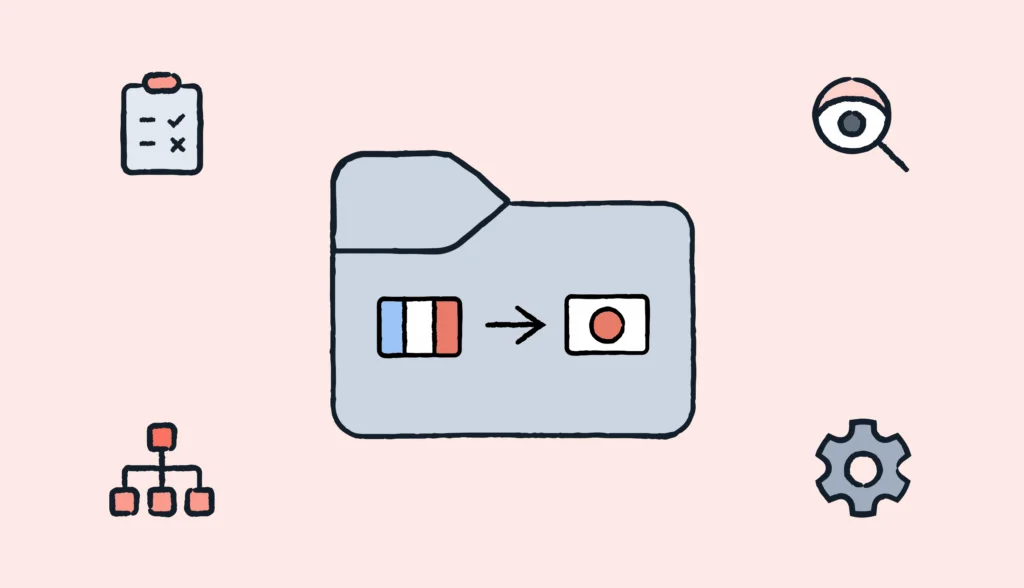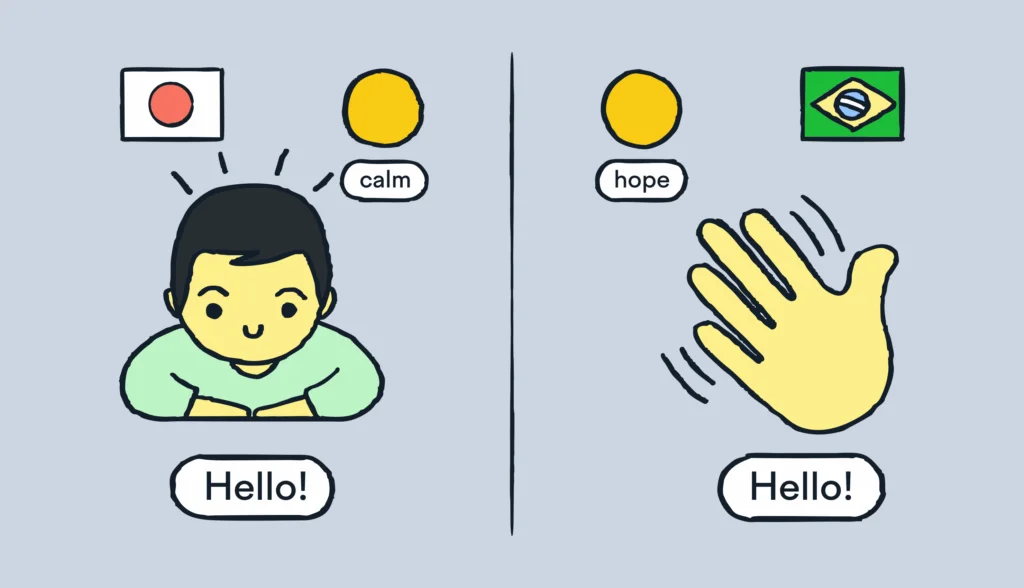A good translation understanding what is translation and its true impact, will drive your business growth, allowing you to promote your products, provide customer service, and tap into completely new markets.
A poor translation, on the other hand, will delay international product launches, damage your brand reputation and increase the risk of confusing, misinforming or outright offending your customers.
So how do you ensure that translation fosters connection instead of confusion? By leveraging the power of translation services. First, you must understand what they entail and how to successfully adapt your brand’s content into your target language.
What are translation services?
Translation services allow you to effectively translate your content into another language, making it accessible to your target audience.
These services can take many forms depending on your industry, goals, and quality requirements, but they can be categorized into two main groups: translation and interpreting services. When looking for the best website translation services, it’s important to understand the difference: interpreting is spoken and in real time, while translation is written and asynchronous.
What is the difference between translation and interpreter services?
Interpreting (also known as interpretation or live translation) occurs in real time, with an interpreter present. It requires quick thinking and extreme focus, with no opportunity to rectify mistakes.
There are five main interpretation techniques:
- Simultaneous interpretation – The interpreter translates the speaker’s words in real time, directly into the listener’s headphones. Used in conferences and presentations.
- Consecutive interpretation – The interpreter takes notes while the speaker talks and translates the message during pauses. Used in speeches and official statements.
- Chuchotage – The interpreter translates by whispering into the listener’s ear and then relays their response to a wider audience. Used in courtrooms and TV appearances.
- Liaison interpretation – The interpreter facilitates back-and-forth communication between two parties. Unlike consecutive interpretation, liaison interpretation is two-way. Used in business meetings and one-on-one scenarios.
- Sign language interpretation – A vital accessibility tool for the deaf and hard of hearing. Used in public announcements and even live concerts!
Translation, which will be our focus today, refers to the written conversion of existing material into another language at any point after its creation (asynchronous translation). Accurate translations require strong reading skills and a deep understanding of context.
Translation encompasses most of the content we consume every day, and it includes:
- Technical translation – Repair and user manuals, scientific and clinical reports, safety instructions, schematics and leaflets.
- Marketing translation – Brochures, catalogues, advertising campaigns, product pages, social media and promotional content, newsletters and press releases.
- Literary translation – Novels, comics, poetry, essays and children’s books.
- Legal translation – Legal documents such as contracts, official records, court documents, patents, wills, birth certificates and terms of service.
- Audiovisual translation – Dubbing or voiceover scripts and subtitles for movies, TV shows, documentaries, educational videos and video games.
- Software localization – Web/mobile apps and computer programs.
Process overview
The translation process consists of three main stages:
1. Project analysis and preparation
In this stage, the client defines the scope of the project by selecting language pairs, estimating word counts, preparing style guides and setting deadlines. The source text is reviewed and finalized before being sent over with all the necessary reference materials. At this point, texts are divided into smaller segments using a CAT tool, with translation memories and glossaries added. After the project managers assemble a team of translators, you’re ready to go!
2. Translation
All translation work takes place in this phase. The translators accurately transpose the content into your target language while adhering to your style and terminology guidelines, potentially asking questions to address ambiguities and fully understand the context around your source material. Make sure to provide quick and clear answers! In the meantime, project managers ensure timelines are respected and facilitate communication between all parties.
3. Quality assurance
After delivery, the linguistic quality assurance phase begins. This may include:
- Proofreading – Going through the target text to ensure terminological consistency and correct grammar/spelling.
- Revision – A more in-depth review to confirm the source material was transposed correctly and effectively.
- Internal review – Testing the translated texts on a functional level to ensure everything works as intended.
Now you may be wondering: how are these services provided, and by whom? That’s where Language Service Providers (LSPs) come into play, offering translation, localization, transcreation, copywriting, audiovisual and consulting services. For a detailed framework on vendor selection and a list of reliable companies, take a look at this article.
Who needs translation services?
Not long ago, only global companies needed translation services. Multinationals like Microsoft, with enough of a presence in multiple regions to justify the need for multilingual content. Today, however, translation is essential for businesses of all sizes. They must adapt to new markets and efficiently translate their products and services for customers who live in different countries and speak different languages.
You might think: “Google Translate is free, I can do it myself!”, but straight-up machine translation is never enough, which is why translation services are in such high demand.
For optimal results, companies should focus on localization, which aims at adapting entire experiences instead of simply translating a message. Check out this post for an in-depth breakdown of the difference between translation and localization.
Types of translation services
There are three main approaches to translating your content:
- Human translation – Done by a professional translator who speaks your target language natively.
- Machine translation – Done by a software with no human oversight.
- Hybrid translation or post-editing – A machine provides the initial translation, which is then edited by a human to avoid mistakes and inaccuracies.
They each come with pros and cons, which we’ve summarized in this table:
| HUMAN TRANSLATION | MACHINE TRANSLATION | HYBRID TRANSLATION | |
| Quality | ✅ highest, context and nuances are understood | ❌ low, lacks context and fluency | ➖ improved by human intervention |
| Speed | ❌ slower | ✅ instant | ➖ moderate |
| Cost | ❌ higher | ✅ lower or free | ➖ mid-range |
| Accuracy | ✅ no mistakes or inaccuracies | ❌ inaccuracies are not addressed | ✅ inaccuracies caught by human eyes |
| Creativity | ✅ unique and inventive | ❌ flat and robotic | ➖ improved by human intervention |
| Consistency | ✅ assured across all content | ❌ unlikely without specific training | ✅ assured by human intervention |
| Scalability | ❌ low | ✅ high | ➖ medium |
| Use cases | Literary & Audiovisual
Marketing Legal |
Non-public content Product reviews Live chats |
Manuals Websites E-commerce |
What is the average cost for translation services?
Translation rates are influenced by many factors, such as language pair demand, project-specific requirements, translation quality, text type and turnaround times. The industry standard is cost per word, ranging from $0.15 to $0.40 for human translation. To streamline costs, use a CAT tool that detects repetitions and fuzzy matches (partial repetitions) so they’re accounted for in the total cost.
Proofreading and revision increase the overall cost of translation services, but they ensure your texts are accurate and error-free.
With machine translation and post-editing, these rates can decrease by 30-60%.
For more detailed information, check out this article about translation rates.
Common issues and how to address them
When we ask companies what their biggest challenges are when it comes to translation, some common answers include:
- Structuring communication with external teams
- Ensuring speed while maintaining a consistent multilingual experience
- Managing the trade-off between time, cost and quality
But why does this happen?
Even though translation is essential in any international expansion strategy, its implementation often lacks consistency across systems and processes.
William Spalding, Localization Senior Project Manager at Spotify, perfectly sums it up:
“The buyer lacks understanding, oversight and control of their quality while the seller struggles to meet quality expectations because the buyer is too hands-off, and the linguists don’t have the support or feedback they need.”
This leads to a deep disconnect between the translation provider and the buyer’s business objectives.
Martina Russo from Moving Words has a solution: “Businesses and LSPs should work together and aim toward seamless localization by eliminating manual tasks, automating processes, and fostering a collaborative environment between all parties”.
Let’s see what this entails on a practical level:
| PROBLEM | SOLUTION |
| Translation is a last-minute effort | Involve an LSP from the start |
| No communication with the translators | Connect internal teams and translators |
| Siloed teams and processes | Implement collaborative workflows |
| Outdated, offline tools | Use cloud services and platforms |
| Slow, e-mail based communication | Enable instant communication via TSM |
5 tips for a better collaboration
It’s clear that collaboration between clients, LSPs and translators is crucial in the provision of effective translation services. Here are five things that any modern, tech-driven business wanting to maximize its global growth can do to collaborate effectively:
1. Take ownership of the process
While an LSP will steer part of your translation efforts, building a global customer experience requires a hands-on approach. Give translation a seat at the table: approach the matter strategically by building a comprehensive plan to ensure everyone is on the same page, allowing your organization to grow efficiently and at scale.
2. Foster a partnership-based approach
Just like your TMS vendor, your LSP should be a true partner in your localization journey.
To establish a solid partnership with an LSP, involve them early on in the process and clearly state your goals and needs, maintaining regular communication through defined channels.
Encourage translators to ask questions to better understand your business, helping them feel more connected to the project and enabling them to craft content that resonates better with your end user.
3. Embrace collaborative workflows
Adopt TMS technology to centralize collaboration between in-house teams and outsourced linguistic teams, ensuring everyone has the same information and stays focused on the same priorities.
For example, the Lokalise-LSP integration helps Withings continuously release localized products in 11 languages and allowed Notion to quickly translate 251,000 words by centralizing their codebase, marketing materials and help documents.
Romain Dahan, Project Manager at Withings, claims that with this new workflow over 50 people – including designers, developers, product people, linguists and marketing teams can now collaborate with context and consistency.
The result?
“We have improved the quality of the localized UI, ensured higher quality translations and consistency of the overall product experience.”
If you aren’t using a Translation Management System (TMS), work with an LSP that can recommend the right tools.
4. Automate processes
Time is money. Eliminate lengthy, unnecessary processes to drive value.
Here are some common issues that can be solved by reducing manual work through a TMS:
- Translators needing different files to get visual context or asking questions to understand what portion of text will appear on which screen and where
- Infinite exchange of e-mails between translators, project managers and internal teams
- Content teams struggling to keep track of updates and additions
- Project managers crunching numbers and manually putting together reports in spreadsheets, using different environments to communicate with translators and internal teams
Avoid all of this by relying on a TMS that seamlessly integrates with your current tech stack to automate and streamline workflows.
5. Value flexibility
Good LSPs and TMSs must be flexible to collaborate with their clients and accommodate their needs. An example? Here’s what happened when Revolut chose RWS’s translation services.
“When we started to work with RWS, they already had their own internal workflow,” says Edward Cooper, Head of Crypto at Revolut. “Lokalise was flexible enough to allow them to simply plug their workflow into it, and we were able to plug our workflow into Lokalise and organize the translation processes really well, not only with internal Revolut people but an external company as well.”
Flexibility means simplicity, which leads to faster, better results.
Where do we go from here?
Businesses and translation services providers share the same goal: create exceptional, multilingual customer experiences.
To succeed, it’s important to understand the process and everything that surrounds it, think long-term and implement strategies to streamline workflows and achieve the best possible results for you, your team, your customers and your business as a whole.
So far we’ve learned what translation services are, who provides them, how the process works, what are the most common challenges and how to address them, but your localization journey is far from over: now is the perfect time to discover how to build a localization strategy to take your brand global.





